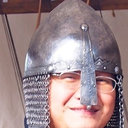Treatable cause of hereditary spastic paraplegia: eight cases of combined homocysteinaemia with methylmalonic aciduria.
Schlüsselwörter
Abstrakt
Combined homocysteinemia with methylmalonic aciduria (MMA/HCY) are genetic disorders of intracellular cobalamin (cbl) transport and processing that cause downstream deficiencies in methylcobalamin and adenosylcobalamin. Untreated disease is characterized biochemically by methylmalonic aciduria and hyperhomocysteinemia, while the clinical features are variable. When spastic paraplegia (SP) dominates, it is difficult to differentiate from hereditary spastic paraplegia (HSP). Clinical, biochemical and imaging features were reviewed in eight patients with MMA/HCY that mimicked HSP. Seven males and one female were enrolled. The median onset age was 13 years old (range 7-26 years old). The median time delay of diagnosis was 20.5 months (range 2-60 months). Spastic gait was the first symptom in four patients, while the other four patients presented with chronic emotional abnormalities or cognitive impairment. The main clinical manifestation was SP, and other neurological symptoms included cognitive impairment (5/8), spastic dysuria (3/8), personality change and depression (3/8), ataxia (2/8), seizures (2/8), limb numbness (2/8), and developmental delay (2/8). When patients were diagnosed, the mean serum homocysteine level, the methylmalonic acid level in urine, the serum propionylcarnitine (C3) level and the ratios of C3-to-acetylcarnitine (C2) and free carnitine (C0) were all dramatically elevated. Cranial MRIs showed nothing remarkable except mild brain atrophy. All spinal MRIs were normal except for case 8. Definite compound heterozygous mutations in MMACHC were detected in five cases. Follow-up indicated partial improvement in all the patients after intramuscular cbl, oral betaine and folate, supporting the diagnosis of MMA/HCY. Our data highlight the need for extensive investigation of intracellular cbl transport and processing, when spastic paraparesis is a prominent component of the clinical picture. Testing for urine methylmalonic acid and serum homocysteine levels is a simple but critical approach in suspected cases. Genetic testing, especially for MMACHC gene mutations, is needed. Raising awareness of this disorder could result in the timely initiation of targeted treatment, which may significantly improve patient outcomes.


